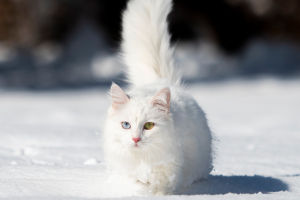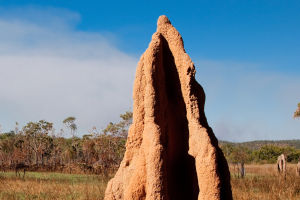Bee Dance Decoded
Have you ever wondered how tiny honeybees can find blooming flowers miles away and then tell their hive-mates where to go?
The secret lies in one of nature's most astonishing communication methods: the waggle dance.
This "figure-eight" dance, performed inside the hive, allows bees to pass along detailed information about the direction and distance of food sources. Let's dive into the fascinating science behind this behavior!
What Is the Waggle Dance?
The waggle dance is a unique form of communication used by honeybees (Apis mellifera) to share information about the location of nectar, pollen, water, or a new nesting site. When a forager bee discovers a rich food source, she returns to the hive and performs a special dance on the vertical comb. The dance forms a figure-eight pattern, with a central straight run—called the "waggle run"—where the bee vibrates her body and makes a buzzing sound.
Direction: Mapping the Angle
The direction of the waggle run relative to gravity indicates the angle between the food source and the sun. For example, if the food source is directly in the direction of the sun, the bee waggles straight up. If it's 60 degrees to the left of the sun, she dances at a 60-degree angle left from vertical. This clever system allows hive-mates to fly out in exactly the right direction, even if they've never been there before.
Distance: Time Is the Key
Distance is communicated by the duration of the waggle run. The longer the bee waggles, the farther the food source is. Typically, every 75 milliseconds of waggle time corresponds to about 100 meters of distance. This time-distance relationship has been confirmed through radar tracking and controlled field experiments by scientists.
The Role of Vibration and Scent
Besides movement, bees use other cues to enhance their message. The buzzing sound made during the waggle run helps other bees locate the dancing bee in the dark hive. Additionally, she often shares the scent of the flowers she visited by letting other bees sample nectar or smell her body. These chemical clues reinforce the accuracy of the visual map the dance creates.
Adjusting for the Moving Sun
Since the sun moves across the sky during the day, bees must constantly adjust their internal compass. They do this using a combination of visual cues, an internal clock, and their ability to detect polarized light. Even when the sun is behind clouds, bees can infer its position from scattered light patterns in the sky—an extraordinary natural adaptation.
How Young Bees Learn the Dance
Young bees don't perform the waggle dance right away. They first act as followers, closely observing experienced dancers. Through repeated exposure, they learn to interpret the movements and eventually try the dance themselves. Interestingly, bees raised in isolation or without dance models may never develop the skill accurately, showing that social learning plays a key role in their communication development.
Why Is This Behavior Important?
The waggle dance is crucial for the survival and efficiency of the colony. By directing foragers to the richest flower patches, it reduces wasted energy and increases the colony's food collection rate. This coordination helps support thousands of bees in one hive and ensures there's enough stored food during seasons of scarcity.
Implications for Science and Technology
The study of bee communication has inspired scientists in fields ranging from robotics to artificial intelligence. Swarm robotics, for example, uses principles from bee behavior to design cooperative drones that can explore or deliver goods with minimal direction. Understanding how bees transmit spatial information can also help ecologists protect pollinators by better mapping flower availability and pesticide exposure zones.
Bees in a Changing World
Sadly, pollinators like honeybees are facing increasing threats from habitat loss, pollution, and climate shifts. Disruptions in their environment can confuse navigation and reduce dance accuracy, ultimately affecting plant pollination. According to research published in Nature Ecology & Evolution, environmental stressors like pesticides and air pollution can impair bees' foraging behavior and dance precision, further endangering ecosystems.
Final Thoughts: Tiny Dancers, Big Impact
The waggle dance is more than just a curious behavior—it's a marvel of evolutionary nature. With a few seconds of movement, a bee can share complex coordinates that guide others miles away. Next time you see a bee buzzing around your garden, think about the incredible communication system hidden within its tiny brain.
Isn't it amazing how such small creatures can perform such precise and purposeful dances? If you had to describe your favorite place using only movement, how would you do it? Maybe we humans still have something to learn from the bees!
-
 Purring Cat SecretsWhy do cats purr? Discover the hidden healing power behind every soothing vibration!
Purring Cat SecretsWhy do cats purr? Discover the hidden healing power behind every soothing vibration! -
 Clever Cat TricksDiscover the most surprising behaviors that prove just how clever cats can be!
Clever Cat TricksDiscover the most surprising behaviors that prove just how clever cats can be! -
 Ants Are SuperstrongHow can ants lift 50 times their own weight? Let's explore their secret muscle power and clever body design!
Ants Are SuperstrongHow can ants lift 50 times their own weight? Let's explore their secret muscle power and clever body design!
Copyright © zogu 2021 - 2025. All Right Reserved.